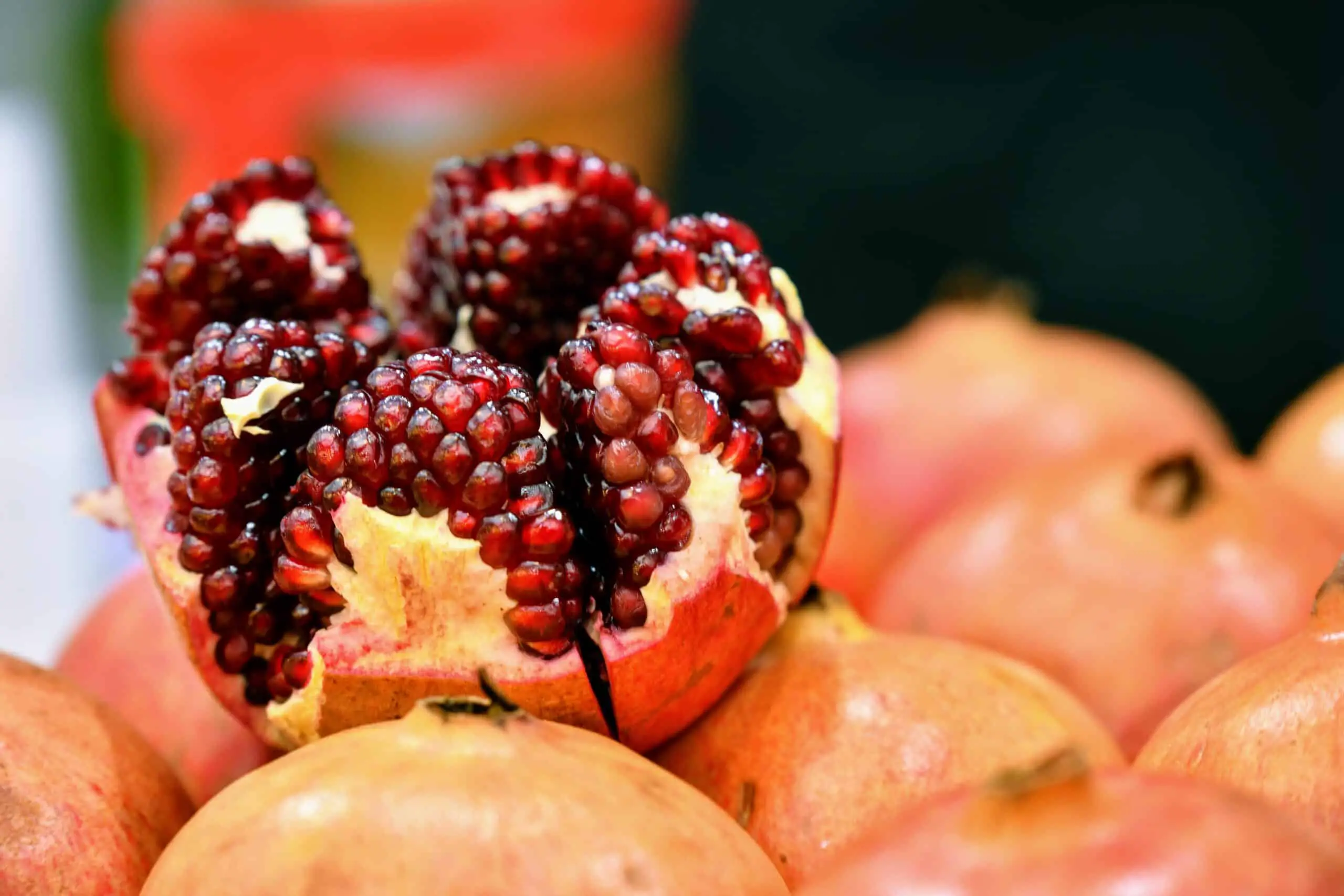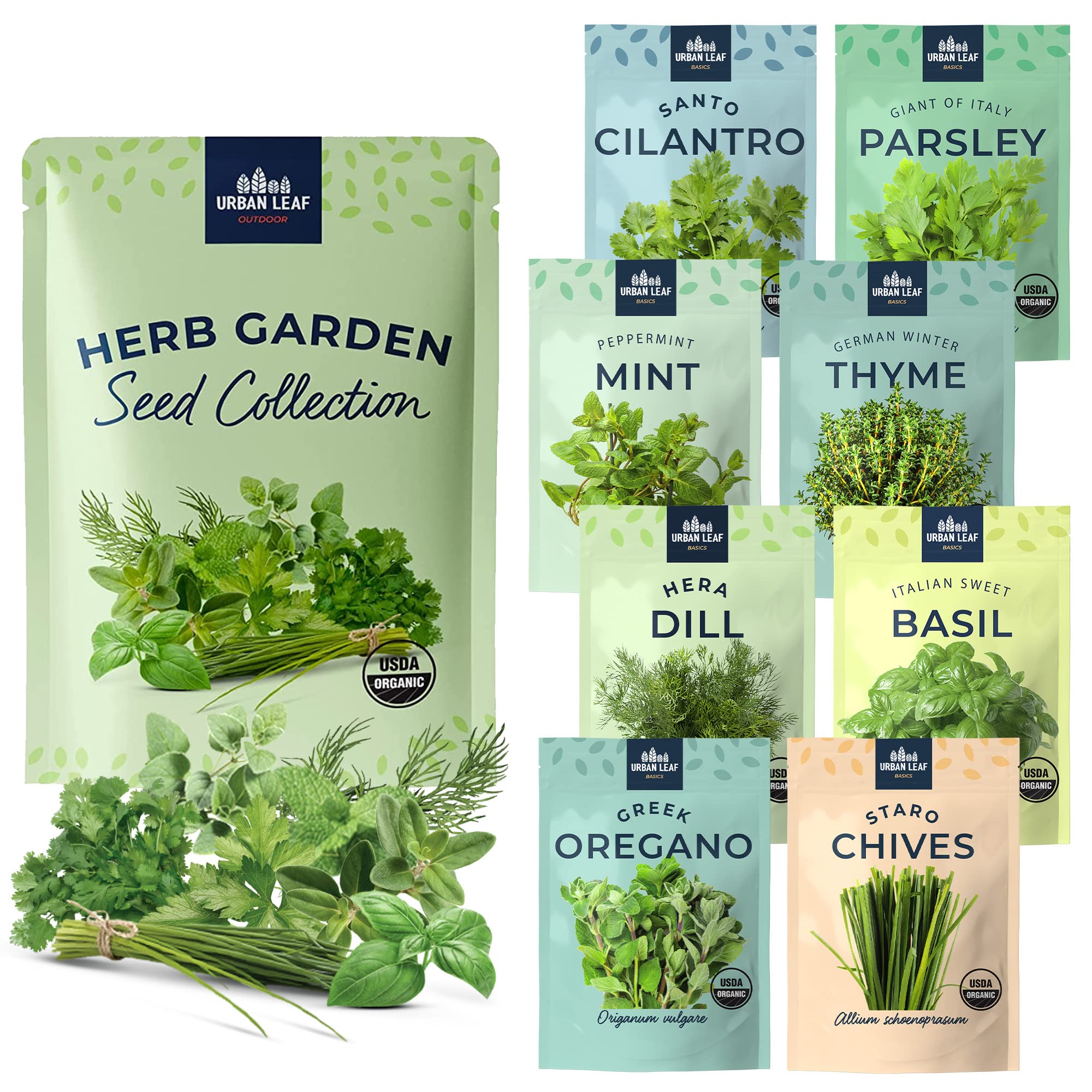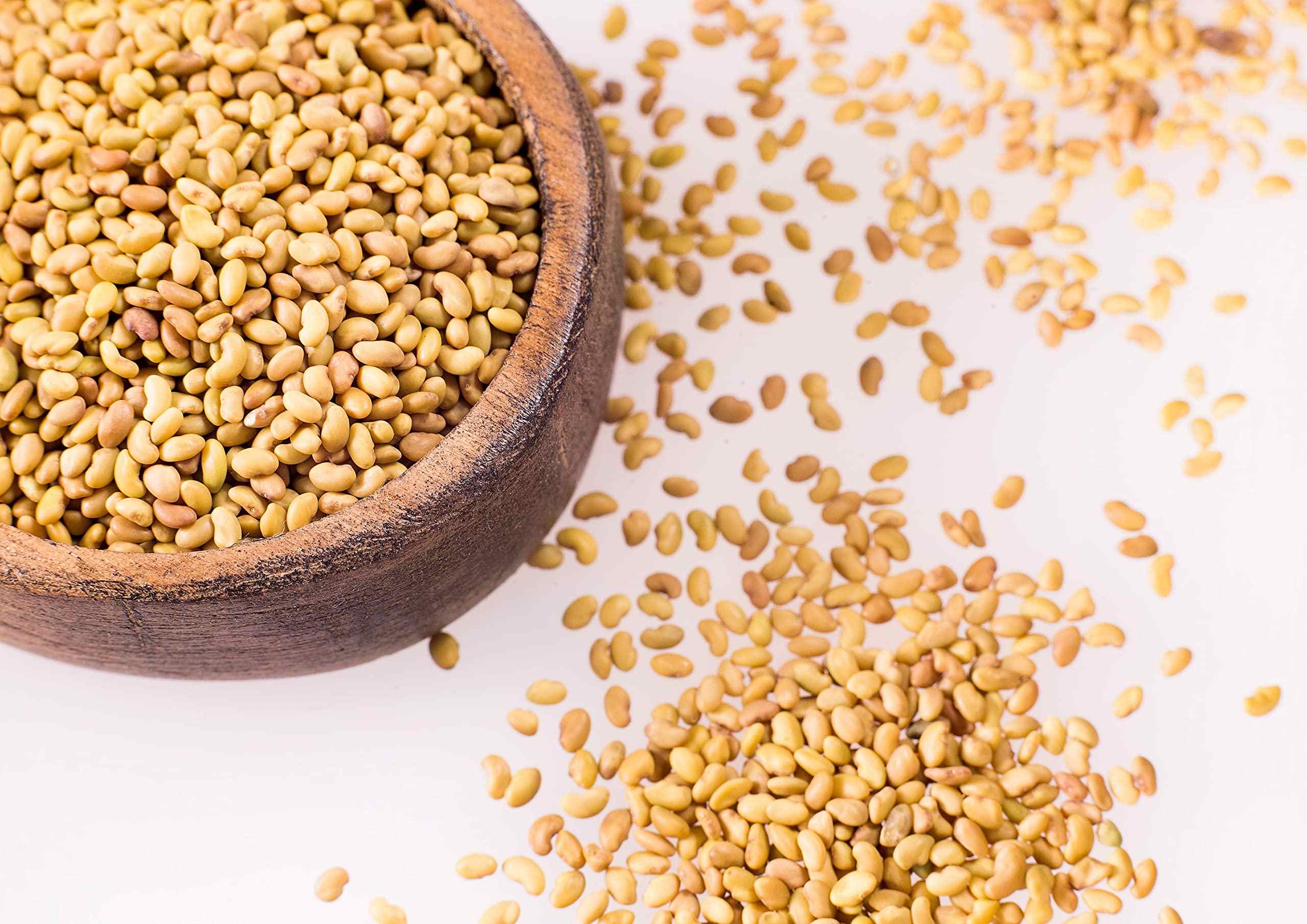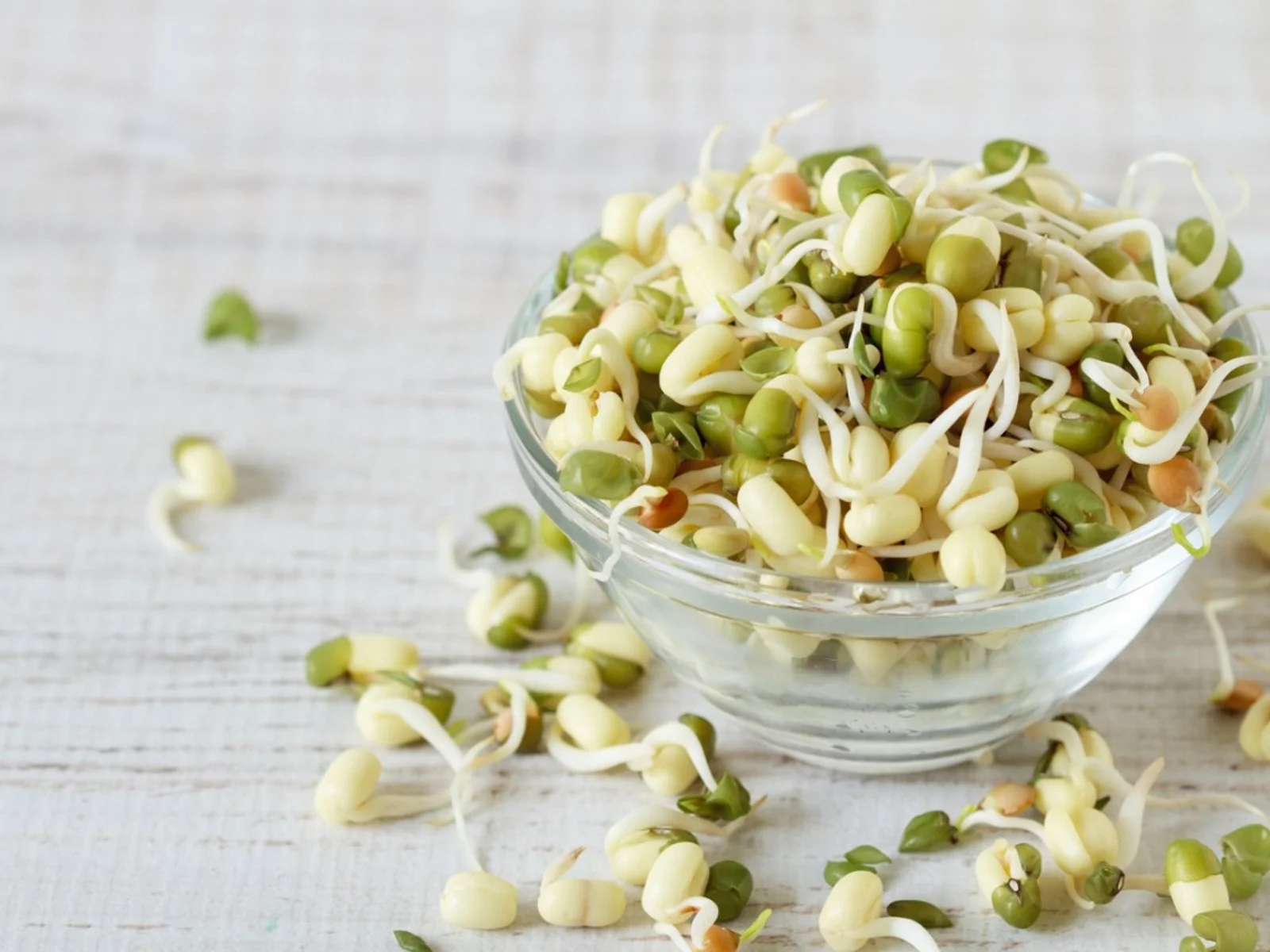Home>Reviews>Product Reviews>Where To Buy Wild Rice Seed For Planting
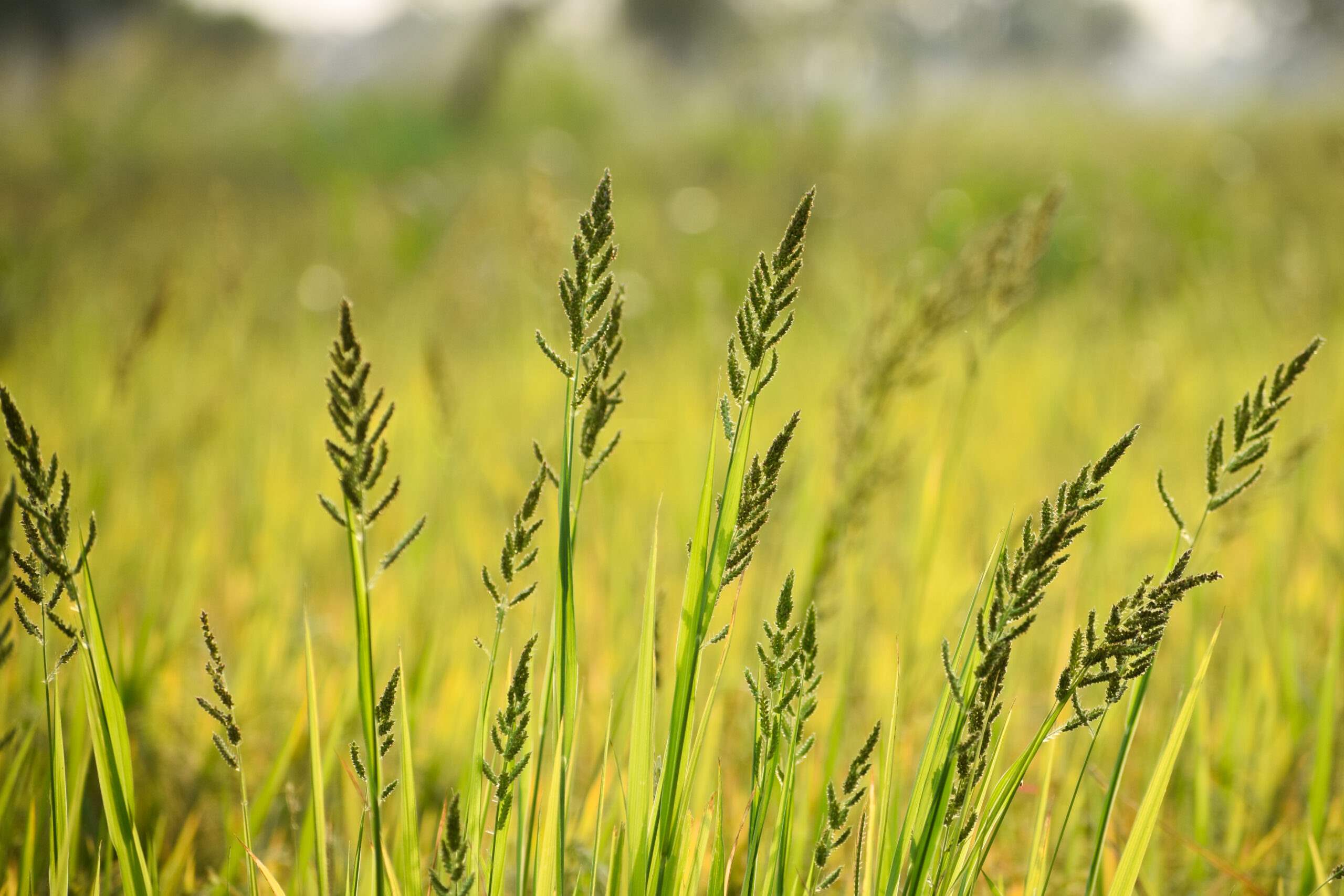

Product Reviews
Where To Buy Wild Rice Seed For Planting
Published: September 6, 2023
Looking for the best place to buy wild rice seed for planting? Read our product reviews and find the top-rated options for growing your own wild rice.
(Many of the links in this article redirect to a specific reviewed product. Your purchase of these products through affiliate links helps to generate commission for Chicagolandgardening.com, at no extra cost. Learn more)
Table of Contents
- Introduction
- Understanding Wild Rice
- Importance of Wild Rice Seed Selection
- Factors to Consider Before Buying Wild Rice Seed for Planting
- Where to Buy Wild Rice Seed
- Online Options for Buying Wild Rice Seed
- Local Nurseries and Garden Centers
- Farm and Agricultural Supply Stores
- Native American Seed Banks
- Tips for Purchasing Wild Rice Seed
- Conclusion
Introduction
Welcome to our comprehensive guide on where to buy wild rice seed for planting. If you are an avid gardener or simply love the idea of growing your own food, wild rice is an excellent addition to your garden. Not only is it a nutritious grain that can be used in a variety of dishes, but it also adds beauty and diversity to your landscape.
Wild rice, scientifically known as Zizania palustris, is a long-grain aquatic plant that is native to North America. It grows naturally in lakes, rivers, and marshes, with its distinctive tall stalks and beautiful, seed-filled heads swaying in the breeze. While wild rice is commonly found in the wild, it can also be cultivated in home gardens and even paddy fields.
Choosing the right wild rice seed for planting is crucial to ensure a successful harvest. The quality of the seed will directly impact the plant’s growth, yield, and overall health. Additionally, considering factors such as seed purity, germination rate, and variety selection can help you achieve the desired results.
In this guide, we will explore the various options for buying wild rice seed, both online and offline. Whether you prefer the convenience of online shopping or the personal touch of a local nursery, we have you covered. Let’s dive in and discover the best sources for high-quality wild rice seed to kickstart your gardening adventure.
Understanding Wild Rice
Before diving into the world of buying wild rice seed, it’s important to have a basic understanding of this unique crop. Wild rice, also known as “Manoomin” in Ojibwe, is not actually rice but rather the seed of an aquatic grass species called Zizania palustris. It has been a staple food for Native American tribes for centuries.
One of the distinguishing features of wild rice is its tall, slender stalks that can grow up to nine feet in height. These stalks emerge from shallow water bodies such as lakes, ponds, or slow-moving rivers. Unlike other rice varieties, wild rice thrives in a semi-aquatic environment.
In addition to its natural beauty, wild rice boasts a nutty flavor and a chewy texture that adds depth to various dishes. It is highly nutritious, rich in protein, fiber, and several essential minerals. Not only is it a healthier alternative to regular white rice, but it also offers a unique taste that can elevate your culinary creations.
Wild rice is recognized for its adaptability, as it can be grown in both flooded and upland conditions. While it is primarily grown in North America, it is also cultivated in other parts of the world, such as China, Australia, and Europe. However, wild rice harvested from its native regions is often considered to be of superior quality.
The cultivation of wild rice requires specific growing conditions. It typically thrives in shallow water that is around two to four feet deep, with water temperatures ranging from 70°F to 85°F. Factors such as water quality, sunlight exposure, and nutrient availability also play crucial roles in ensuring a successful harvest.
Understanding the unique characteristics and requirements of wild rice will help you make informed decisions when purchasing wild rice seed. By selecting the right seed and providing the necessary growing conditions, you can cultivate this remarkable crop in your own garden.
Importance of Wild Rice Seed Selection
When it comes to growing wild rice, the seed selection process is crucial for a successful harvest. The quality of the seed directly impacts the growth, yield, and overall health of the plants. Therefore, it is essential to understand the importance of selecting the right wild rice seed for planting.
One of the primary considerations when choosing wild rice seed is purity. Wild rice seeds need to be free from contaminants and other crop seeds to ensure that you are growing true wild rice. Purchasing seeds from reputable sources that specialize in wild rice can help guarantee their purity.
Another crucial factor to consider is the germination rate of the seed. Germination rate refers to the percentage of seeds that successfully sprout and develop into healthy plants. It is advisable to choose seeds with a high germination rate to maximize your chances of a successful harvest.
Furthermore, the variety of wild rice can also play a significant role in the overall outcome. Different varieties of wild rice may have slightly different growth habits, yield potentials, and flavor profiles. Researching and selecting a variety that aligns with your preferences and growing conditions can greatly enhance your wild rice cultivation experience.
It is worth noting that wild rice seeds are available in both pre-hulled and unhulled forms. Pre-hulled seeds have had the tough outer hull removed, which simplifies the cooking and processing process. Unhulled seeds, on the other hand, retain their protective hull and may require additional processing before consumption. Consider your intended use and cooking preferences when deciding between pre-hulled and unhulled seeds.
Last but not least, purchasing wild rice seeds from a reliable and reputable source is essential. Reputable suppliers provide seeds that have been carefully selected, tested, and stored under optimal conditions. They can offer guidance on seed selection, growing tips, and troubleshooting advice to ensure your success as a wild rice gardener.
By taking the time to choose high-quality wild rice seeds, you are setting yourself up for a rewarding and productive gardening experience. Remember, the seed selection process is the first step in your journey to grow delicious and nutritious wild rice from the comfort of your own home.
Factors to Consider Before Buying Wild Rice Seed for Planting
Before purchasing wild rice seed for planting, it’s important to consider several factors to ensure a successful and rewarding gardening experience. These factors can help you make informed decisions and choose the right seed for your specific needs and growing conditions. Here are some key factors to consider:
- Climate suitability: Wild rice thrives in specific climatic conditions, primarily in regions with cooler summers and mild winters. Consider the climate of your area and whether it aligns with the requirements of wild rice cultivation.
- Water availability: Wild rice is a semi-aquatic plant that requires access to abundant water. Assess your water resources and determine if you have access to a suitable water body for growing wild rice.
- Space requirements: Take into account the amount of space you have available for planting wild rice. It typically requires shallow water areas, so ensure that you have enough space in your garden or access to suitable natural bodies of water.
- Seed purity: Look for wild rice seeds that are certified as pure and free from contaminants. This ensures that you are growing true wild rice and not a hybrid or different variety.
- Germination rate: Consider the germination rate of the seed you are buying. Look for seeds with a high germination rate to increase the chances of successful growth and a productive harvest.
- Seed variety: Different wild rice varieties have slightly different growth habits, yield potentials, and taste profiles. Research various varieties and select the one that best suits your preferences and growing conditions.
- Supplier reputation: Purchase wild rice seeds from reputable suppliers who specialize in wild rice. They can provide high-quality seeds and offer expert advice on seed selection, growing techniques, and troubleshooting.
- Seed processing: Decide whether you want to buy pre-hulled or unhulled wild rice seeds. Pre-hulled seeds have the outer hull removed, making them easier to cook and process. Unhulled seeds retain their hull and may require additional processing.
By considering these factors, you can make an informed choice when purchasing wild rice seed for planting. This will set the foundation for a successful and enjoyable wild rice gardening experience, allowing you to grow and enjoy this nutritious grain right in your own backyard.
Where to Buy Wild Rice Seed
Now that you understand the importance of selecting the right wild rice seed for planting, let’s explore where you can buy these seeds. There are several options available, both online and offline, to help you find high-quality wild rice seeds. Here are some places to consider:
- Online Options: Online marketplaces and websites dedicated to gardening and farming offer a wide selection of wild rice seeds. Websites like Amazon, eBay, and specialty seed suppliers provide convenient access to a variety of wild rice seeds. Look for reputable sellers with positive reviews to ensure the quality of the seeds.
- Local Nurseries and Garden Centers: Pay a visit to your local nurseries or garden centers. They often carry a range of seeds for different plants, including wild rice seeds. The advantage of shopping locally is the opportunity to speak with knowledgeable staff who can provide guidance and advice specific to your region.
- Farm and Agricultural Supply Stores: Farm supply stores or agricultural cooperatives may stock wild rice seeds, especially in areas where wild rice cultivation is common. These stores cater to the needs of farmers and gardeners and can be a reliable source for high-quality wild rice seeds.
- Native American Seed Banks: Consider reaching out to Native American seed banks or organizations that specialize in preserving and promoting indigenous crops. They often offer traditional, heirloom varieties of wild rice seeds. Purchasing from these sources not only supports cultural preservation efforts but also ensures the authenticity and quality of the seeds.
When buying wild rice seeds, it’s important to consider factors such as purity, germination rate, variety selection, and supplier reputation. Take the time to research and compare options to find a reputable source that meets your specific requirements.
Before making a purchase, read customer reviews, check for any guarantees or certifications, and consider the reputation of the supplier. This will help you make an informed decision and increase the likelihood of obtaining high-quality wild rice seeds for your planting endeavors.
By exploring these various sources, both online and offline, you can find the best place to buy wild rice seeds and embark on your wild rice growing journey.
Online Options for Buying Wild Rice Seed
When it comes to purchasing wild rice seed, online options offer convenience and a wide selection of choices. Here are some online platforms and websites where you can find high-quality wild rice seeds:
- Amazon: The world’s largest online marketplace, Amazon, is a convenient option for buying wild rice seeds. They offer a variety of options from different sellers, allowing you to compare prices, read customer reviews, and choose the seed that best meets your needs. Be sure to check the seller’s ratings and reviews to ensure their reliability.
- eBay: eBay is another popular online marketplace where you can find wild rice seeds. Similar to Amazon, eBay offers a wide selection of seeds from various sellers. Take the time to review the seller’s feedback and ratings to ensure a positive buying experience.
- Specialty Seed Suppliers: Numerous websites specialize in selling a wide range of seeds, including wild rice seeds. These suppliers focus on providing high-quality, specialty seeds and often have a greater selection of wild rice varieties. Look for reputable suppliers with positive reviews and consider their expertise in wild rice cultivation.
- Online Seed Banks: Online seed banks are dedicated to preserving and promoting biodiversity by offering a vast range of seeds, including wild rice. These seed banks may have rare, heirloom varieties that can add uniqueness to your garden. Some seed banks focus on native and indigenous seeds, ensuring the authenticity and cultural significance of the wild rice seeds they sell.
- Gardening Websites and Forums: Explore gardening websites, forums, and online communities that cater to gardeners and plant enthusiasts. These platforms often have sections or forums where members can trade or sell seeds. Engaging with fellow gardeners can provide opportunities to buy wild rice seeds from trusted sources or even participate in seed exchanges.
When buying wild rice seeds online, be sure to carefully read product descriptions, check for any guarantees or certifications, and ensure the seeds are suitable for your growing conditions. Take advantage of customer reviews and ratings to get insights into the quality and reliability of the seeds and the sellers.
Additionally, consider factors such as shipping costs, delivery times, and return policies when making your purchase. Look for sellers who package and ship the seeds in a way that ensures their viability during transit.
By exploring these online options, you can conveniently browse and purchase wild rice seed from the comfort of your own home. Just remember to thoroughly research the sellers, read reviews, and choose a reputable source to ensure you receive high-quality wild rice seeds for your planting endeavors.
Local Nurseries and Garden Centers
Local nurseries and garden centers are fantastic options for purchasing wild rice seed, as they offer convenience and the opportunity to speak with knowledgeable staff who understand the local gardening conditions. Here are some reasons why you should consider checking your nearby nurseries and garden centers for wild rice seed:
- Expert Advice: Local nurseries and garden centers employ staff who have experience and expertise in gardening. They can provide valuable advice on growing wild rice in your specific area, recommend suitable varieties, and answer any questions you may have. This personalized guidance can greatly improve your chances of a successful wild rice harvest.
- Native Plant Selection: Nurseries that cater to local gardeners often focus on native plants, including wild rice. They understand the importance of promoting native species and may carry region-specific wild rice varieties that are well-suited to the local climate and soil conditions. These varieties are more likely to thrive and produce a bountiful harvest.
- Familiarity with Local Conditions: Local garden centers and nurseries have a deep understanding of the unique growing conditions in your area. They can advise you on which wild rice varieties are better suited to your soil type, sun exposure, and water availability. This expertise can help you make informed decisions and optimize your chances of success.
- Hands-On Shopping Experience: Visiting a local nursery or garden center allows you to physically examine the seeds before making a purchase. You can evaluate the packaging, check for any signs of damage or deterioration, and personally select the seeds that look healthy and viable. This hands-on shopping experience gives you more control over the quality of the wild rice seeds you bring home.
- Sustainable Gardening Practices: Nurseries and garden centers often prioritize eco-friendly and sustainable gardening practices. By purchasing wild rice seeds from them, you can support their efforts in promoting sustainable gardening and contribute to the conservation of native plant species.
When visiting local nurseries and garden centers, it’s a good idea to call in advance to check if they carry wild rice seeds. This will save you time and ensure that you can find the seeds you need for your garden. Feel free to ask questions and seek advice from the knowledgeable staff to further enhance your gardening experience.
By exploring these local options, you can access expert advice, find a diverse selection of wild rice seeds, and support local businesses while embarking on your wild rice growing journey.
Farm and Agricultural Supply Stores
Farm and agricultural supply stores are excellent places to consider when looking to buy wild rice seed for planting. These stores cater to the needs of farmers, gardeners, and agricultural enthusiasts, offering a variety of seeds, tools, and supplies. Here’s why you should explore farm and agricultural supply stores for wild rice seed:
- Expanded Seed Selection: Farm and agricultural supply stores typically have a wide selection of seeds available, including specialty crops like wild rice. They understand the needs of local farmers and gardeners, and often stock regionally appropriate seeds. This allows you to choose from a broader range of wild rice varieties to find the one best suited for your growing conditions.
- Knowledgeable Staff: The staff at farm and agricultural supply stores are often experienced and knowledgeable when it comes to growing crops. They can provide advice on selecting the right wild rice seed, offer tips on cultivating and caring for the plants, and address any questions or concerns you may have. Their expertise can significantly enhance your wild rice growing experience.
- Quality Assurance: Farm supply stores typically take care to source high-quality seeds from reputable suppliers. They understand the importance of offering reliable seeds that have been properly tested and stored. By purchasing wild rice seed from these stores, you can have confidence in the quality and viability of the seeds you’re bringing home.
- Access to Agricultural Supplies: In addition to seeds, farm and agricultural supply stores carry a wide range of other supplies that may enhance your wild rice growing process. This includes fertilizers, irrigation systems, gardening tools, and more. By visiting these stores, you can conveniently gather all the necessary materials for a successful wild rice cultivation project.
- Networking Opportunities: Farm supply stores often serve as gathering places for local farmers and gardeners. These establishments may organize workshops, seminars, or community events related to agriculture and gardening. Participating in such events can provide valuable networking opportunities and allow you to connect with fellow enthusiasts who share your passion for wild rice cultivation.
To find farm and agricultural supply stores in your area, simply search online or consult local directories. Visit the stores in person to explore their selection of wild rice seeds and interact with the knowledgeable staff. Take advantage of their expertise and resources to make informed decisions about your wild rice seed purchase.
By exploring farm and agricultural supply stores, you can tap into the wealth of knowledge and resources available to farmers and gardeners, ensuring that you have everything you need to cultivate healthy and productive wild rice plants.
Native American Seed Banks
Native American seed banks are valuable resources for acquiring wild rice seed for planting. These organizations play a vital role in preserving and promoting indigenous crops, including wild rice. Here are some reasons why you should consider exploring Native American seed banks for your wild rice seed needs:
- Cultural Preservation: Native American seed banks have a deep commitment to preserving and promoting traditional agricultural practices and crop varieties. By purchasing wild rice seeds from these seed banks, you are actively supporting the preservation of indigenous knowledge and cultural heritage.
- Authenticity and Quality: Native American seed banks focus on providing authentic, traditional wild rice seeds that have been carefully selected and preserved. These seeds have often been passed down through generations, ensuring their authenticity and quality.
- Unique Varieties and Landraces: Native American seed banks may offer rare, heirloom varieties of wild rice that aren’t commonly found elsewhere. These distinct varieties carry unique traits and flavors that can add diversity and richness to your garden. They also contribute to the conservation of biodiversity by preserving landraces—locally adapted varieties of wild rice.
- Specialized Knowledge and Support: Native American seed banks are often accompanied by a wealth of specialized knowledge related to wild rice cultivation and traditional agricultural methods. They can offer guidance and advice on growing conditions, planting techniques, and sustainable agricultural practices.
- Community Impact: When you buy wild rice seeds from a Native American seed bank, you are directly supporting the community and the mission of these organizations. The proceeds generated from seed sales often go towards initiatives that benefit Native American communities and support ongoing conservation efforts.
- Cultural Exchange: Engaging with Native American seed banks can provide opportunities for cultural exchange and learning. Some seed banks organize workshops, events, or educational programs where you can gain insights into Native American culture, history, and traditions related to wild rice cultivation.
To find Native American seed banks, search online or reach out to local Native American communities or organizations. They can direct you to the nearest seed banks or provide information on how to purchase wild rice seeds.
When purchasing wild rice seeds from Native American seed banks, ensure that you respect and honor their cultural protocols and seed saving practices. Understand that these seeds hold cultural significance, and their use should be done in a manner that acknowledges and appreciates the traditions associated with them.
By exploring Native American seed banks, you are not only obtaining high-quality wild rice seeds but also actively participating in the preservation and celebration of indigenous culture and heritage.
Tips for Purchasing Wild Rice Seed
When it comes to purchasing wild rice seed, there are a few helpful tips to keep in mind to ensure you make the best choice for your gardening needs. Consider these tips when buying wild rice seed:
- Research and Plan: Before making a purchase, spend time researching and understanding the specific growing requirements of wild rice. Consider factors such as climate, water availability, space, and soil conditions to ensure that you are selecting a variety of wild rice that will thrive in your location.
- Buy From Reputable Sources: Purchase wild rice seeds from reputable sellers or seed banks that specialize in high-quality seeds. Look for reviews, certifications, and any guarantees of purity or germination rates. Reputable sources can provide guidance and support throughout your wild rice growing journey.
- Check Seed Purity: Ensure that the wild rice seeds you are buying are pure and free from contaminants. This will help ensure that you are growing true wild rice and not a hybrid or different variety. Look for seeds that are certified as pure and have been tested for quality and authenticity.
- Consider Germination Rate: Check the germination rate of the wild rice seeds you are considering. A higher germination rate indicates a greater likelihood of successful sprouting and growth. Choose seeds with a high germination rate to increase the chances of a successful crop.
- Variety Selection: Consider the variety of wild rice you wish to grow. Different varieties may have slightly different growth habits, yield potentials, and taste profiles. Research various varieties and choose one that aligns with your preferences and the specific conditions of your garden.
- Manage Budget and Quantity: Determine your budget and the amount of wild rice seed you need. Consider factors such as the size of your growing area and your desired yield. Purchasing a sufficient quantity of seeds ensures that you have an adequate supply for successful planting and potential future harvests.
- Check Seed Packaging: Assess the packaging of the wild rice seeds. Look for properly sealed, airtight packages to ensure freshness and prevent moisture or pest damage. Avoid purchasing seeds in damaged or opened packaging, as it may compromise the viability of the seeds.
- Consider Pre-Hulled vs. Unhulled Seeds: Decide whether you want to purchase pre-hulled wild rice seeds, where the hard outer husk has been removed, or unhulled seeds that retain their hulls. Pre-hulled seeds are more convenient for cooking, while unhulled seeds may require extra preparation before use.
By following these tips, you can make an informed decision when purchasing wild rice seed, increasing your chances of a successful and rewarding wild rice harvest.
Conclusion
Growing wild rice can be a rewarding and fulfilling experience. By carefully selecting the right wild rice seed, you can ensure a successful harvest and enjoy the beauty and nutritional benefits of this unique crop. In this comprehensive guide, we have explored various factors to consider before purchasing wild rice seed, as well as different sources where you can buy them.
Understanding the importance of wild rice seed selection is the first step in your wild rice growing journey. Factors such as seed purity, germination rate, variety selection, and supplier reputation all play a crucial role in the success of your crop. Taking the time to research, plan, and choose high-quality seeds will set the foundation for a thriving garden.
When it comes to purchasing wild rice seed, there are several options to explore. Online platforms like Amazon and eBay provide convenience and extensive choices, while specialty seed suppliers and online seed banks offer a wider selection of wild rice varieties. Local nurseries and garden centers offer personalized advice and the opportunity to personally inspect the seeds. Farm and agricultural supply stores cater to the needs of farmers and often stock high-quality wild rice seeds. Additionally, Native American seed banks are valuable sources for authentic, traditional wild rice seeds that contribute to cultural preservation.
Keep in mind the tips provided in this guide when purchasing wild rice seed, including conducting thorough research, buying from reputable sources, checking seed purity and germination rate, and considering variety selection. By following these tips, you can make informed decisions and increase your chances of a successful wild rice harvest.
Remember, growing wild rice is not just about the end result but also about the journey. Embrace the learning experience, connect with fellow gardeners, and enjoy the process of nurturing and cultivating this remarkable crop. Whether you’re adding beauty to your landscape or enriching your culinary creations, growing wild rice is sure to bring satisfaction and joy to your gardening endeavors.
